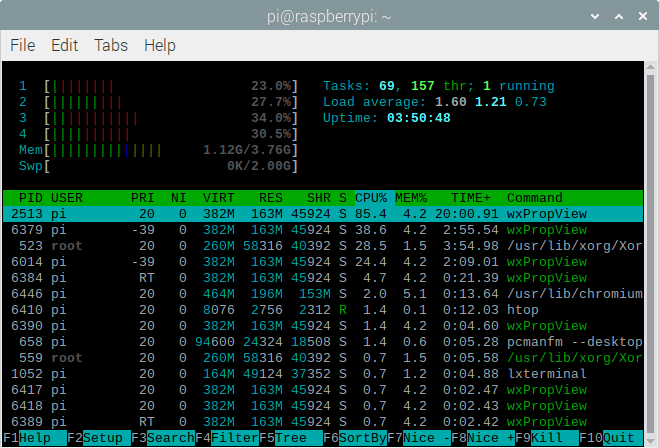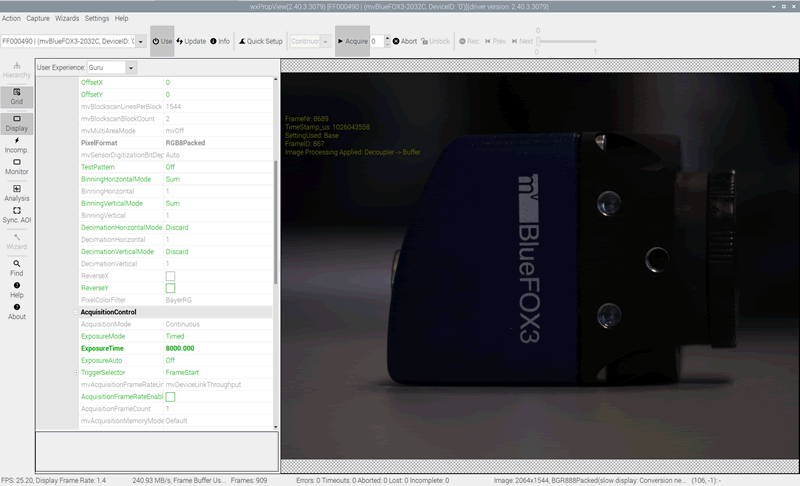Raspberry Pi 4
General
The Raspberry Pi 4 is a well priced platform regarding its performance.
| CPU | Cortex-A72 @ 1500MHz |
| Cores | 4 |
| RAM | 1/2/4/8 GB |
| USB2.0 Interfaces | 2 |
| USB3.0 Interfaces | 2 |
| Ethernet | 10/100/1000 MBit |
- Note
- For the following benchmark the 4GB version of the Raspberry Pi 4 with Raspbian OS has been used.
Test Setup

Additional Settings
| Setting | Value | Description |
| usbcore.autosuspend | -1 | Disables USB auto-suspend mode. See Disabling The Auto-Suspend Mode |
| usbcore.usbfs_memory_mb | 256 MB | Increases the kernel memory for USB traffic. See Increasing Kernel memory |
Benchmarks
The following tests have been performed using different de-Bayering scenarios to achieve the max. FPS while maintaining 0 lost images. The CPU load during the acquisition is also documented below.
Scenarios that have been tested are listed as follows:
- When de-Bayering is carried out on the camera: The camera delivers RGB8 image data to the host system. This setting results in a lower CPU load but a lower frame rate.
- When de-Bayering is carried out on the host system: The camera delivers Bayer8 image data to the host system. The Bayer8 image data then get de-Bayered to RGB8 format on the host system. This setting results in a higher frame rate but a higher CPU load as well.
- When no de-Bayering is performed: The camera delivers Bayer8 image data to the host system. No de-Bayering is performed. This settings results in a lower CPU load and a higher frame rate. The behavior is identical to monochrome cameras.
| Camera | Resolution | Pixel Format | Frame Rate [Frames/s] | Bandwidth [MB/s] | CPU Load |
| mvBlueFOX3-2032C | 2064 x 1544 | RGB8 (on camera) → RGB8 (on host) | 25.20 | 240.92 | ~29% |
 | |||||
| |||||
| Camera | Resolution | Pixel Format | Frame Rate [Frames/s] | Bandwidth [MB/s] | CPU Load |
| mvBlueFOX3-2032C | 2064 x 1544 | BayerRG8 (on camera) → RGB8 (on host) | 40.00 | 127.47 | ~84% |
 | |||||
| |||||
| Camera | Resolution | Pixel Format | Frame Rate [Frames/s] | Bandwidth [MB/s] | CPU Load |
| mvBlueFOX3-2032C | 2064 x 1544 | BayerRG8 (on camera) → BayerRG8/Raw (on host) | 110.01 | 350.58 | ~45% |
 | |||||
 | |||||


